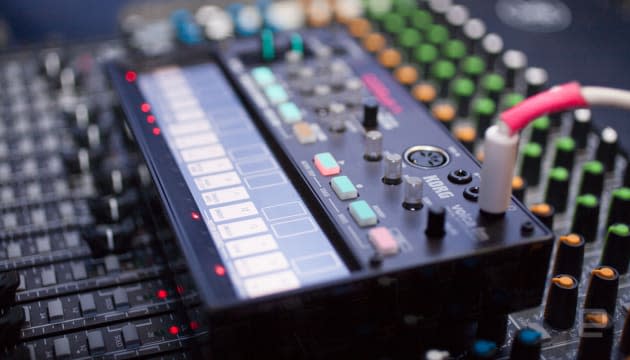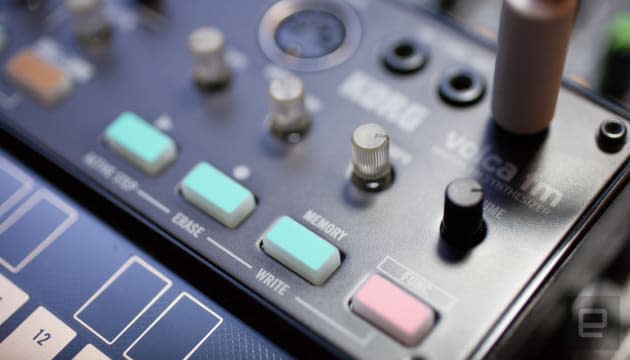Relive the '80s with the Korg Volca FM synthesizer
You get a ton of features in this $160 device.

Synths are great. You push a key, turn a few knobs and suddenly you're making "music." So when keyboard maker Korg realized it had a hit with its low-cost, entry-level Monotron series, it was only natural to follow it up with something that had a little more bite. Enter the Volca line keyboards. At $160, they're not in the same impulse-purchase range as the $50 Monotrons, but at least one of these synthesizers is a welcome addition for would-be Kraftwerk disciples workings toward converting their garage into sprawling mess of wires and flashing lights.
Of the highly focused new Volca models (bass, loops, beats, etc.) I tested the Volca FM, which is based on the wildly influential Yamaha DX7 digital synth. Both use frequency modulation to create a "metallic" sound -- sort of as if your keyboard were attached to a piece of aluminum siding. It's a crisp timbre that was used extensively in the 1980s by artists like Depeche Mode, Kenny Loggins (DANGER ZONE!), Phil Collins, Tears for Fears, both Janet and Michael Jackson, and really anyone you'd find on a "totally '80s!" playlist.
Sure, the pedigree is impressive (DANGER ZONE!), but what really matters is that the Volca FM is a powerful little synth you can pick up for $160.

Similar to the Monotron line, the Volca FM has a ribbon keyboard so you're not going to be hammering out complex songs in real time on the touch-sensitive layout. Still, thanks to the step sequencer that can link as many as 16 sequences of 16 steps together, so you can build incredibly elaborate patterns. It even records knob twists. So if you want to crank up the modular decay during a certain hit that's part of your final loop, go for it.
It's all great until you try to edit a sequence. While building out your steps, going back to correct a mistake or just make an adjustment is frustrating, and I usually ended up starting over. For simple patterns it's not that big a deal. But if you're creating something complex, get ready for a long night of throwing your hands in the air.
But the Volca is so crammed with features that any minor frustration is quickly eclipsed when you're playing the arpeggiator, LFO, chorus and the choice of three voice polyphonic sounds, monophonic or mono setting. It even supports the file formats of the DX7 so you can add additional sound patches. The deeper you dive into this keyboard, the better the value.

The electronics are housed in a smoky translucent case that feels solid enough to handle being transported to gigs. There's a tiny speaker on the bottom that's serviceable but won't replace headphones for the best sounds. But thanks to the addition of battery power, the Volca FM quickly became the go-to test bed for off-the-cuff ideas at my house. Why dig a synth out of its storage case, plug it into the wall and find some headphones when I can have this tiny synth in my lap right when the mood hits me?
Another pleasant surprise was that in the studio it didn't exhibit the line noise that makes the Monotrons less than ideal for live performances. And while there's no tap tempo button, you can sync it via MIDI to devices so you're not trying to line up your beats on the fly while on stage.
Throw in an old-school seven-segment LED display and the Volca FM is a fun and surprisingly powerful synth that should be equally at home on stage and in your living room.









